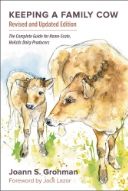|
|||
|
|||
|
|||
|
|||
|
- Emergency!
- Welcome!
- Family Cows and Farming
- Words of Wisdom
- The Tree of Knowledge
- New cow - Now what?!
- Cow Emergencies
- Milk Fever
- Ketosis
- Grass Tetany, Other Mineral Imbalance
- Mastitis
- General Cow Health & Welfare
- Grass/Hay/Feed/Graining
- Breeding, Genetics, Bulls and AI
- Pregnancy, Calving, and Post-calving
- Do It Yourself Cow Care
- Udder Health Care & Knowledge
- Calves and calf issues
- Everything about Milking
- Raw Milk
- A1/A2 Info
- Projects and Plans
- Pest control
- Disaster Preparedness
- Essays
- The Tree of Knowledge
- Real Food
- Message Board Information
|
|
|




